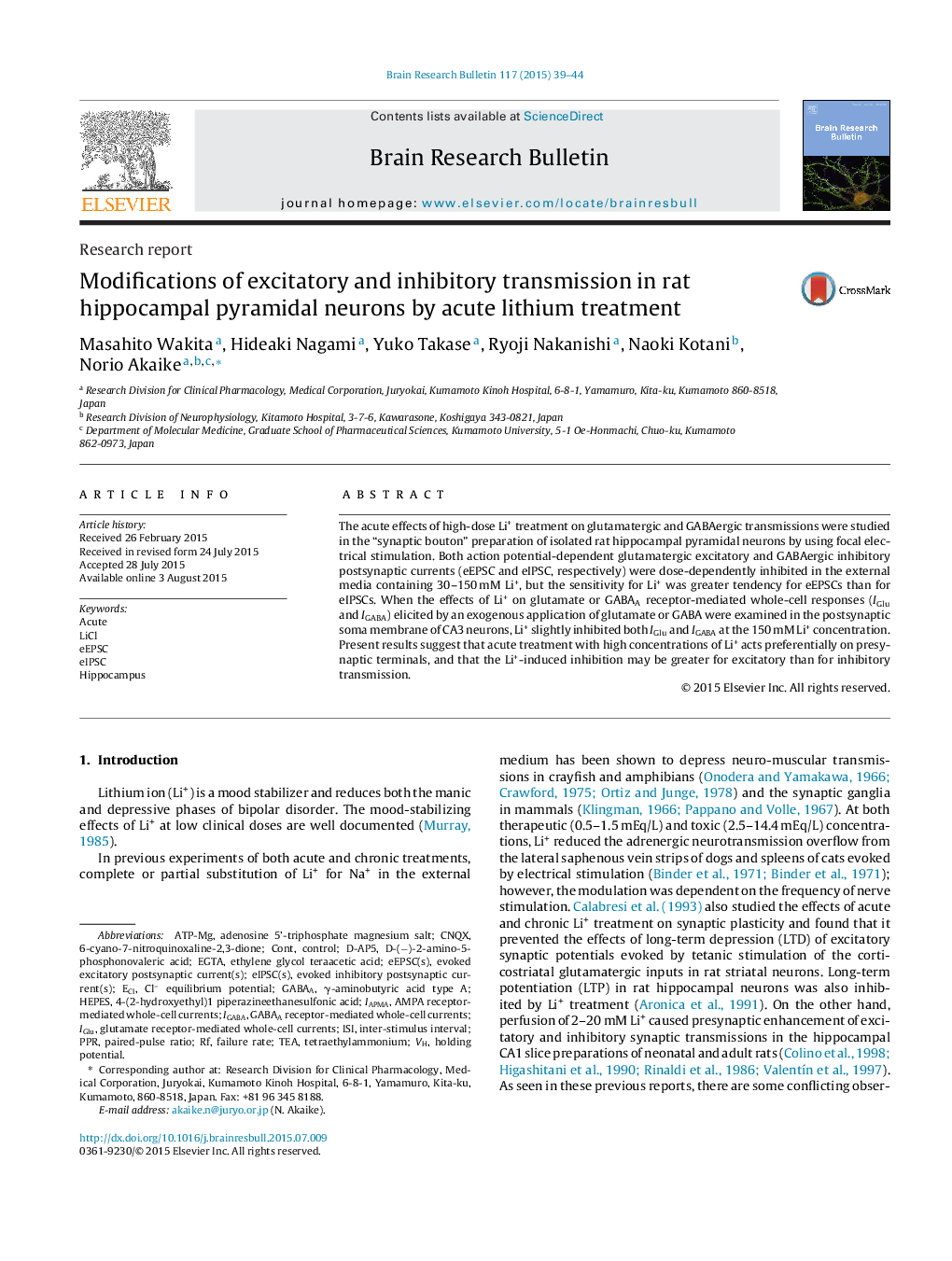| Article ID | Journal | Published Year | Pages | File Type |
|---|---|---|---|---|
| 4318682 | Brain Research Bulletin | 2015 | 6 Pages |
•Acute effects of Li+ were examined in isolated rat hippocampal pyramidal neurons.•30–150 mM Li+ inhibited glutamatergic eEPSCs and GABAergic eIPSCs.•The inhibition was greater in eEPSCs.•Li+ slightly inhibited exogenous glutamate and GABA responses.•Findings suggest a preferential presynaptic inhibition by Li+.
The acute effects of high-dose Li+ treatment on glutamatergic and GABAergic transmissions were studied in the “synaptic bouton” preparation of isolated rat hippocampal pyramidal neurons by using focal electrical stimulation. Both action potential-dependent glutamatergic excitatory and GABAergic inhibitory postsynaptic currents (eEPSC and eIPSC, respectively) were dose-dependently inhibited in the external media containing 30–150 mM Li+, but the sensitivity for Li+ was greater tendency for eEPSCs than for eIPSCs. When the effects of Li+ on glutamate or GABAA receptor-mediated whole-cell responses (IGlu and IGABA) elicited by an exogenous application of glutamate or GABA were examined in the postsynaptic soma membrane of CA3 neurons, Li+ slightly inhibited both IGlu and IGABA at the 150 mM Li+ concentration. Present results suggest that acute treatment with high concentrations of Li+ acts preferentially on presynaptic terminals, and that the Li+-induced inhibition may be greater for excitatory than for inhibitory transmission.
